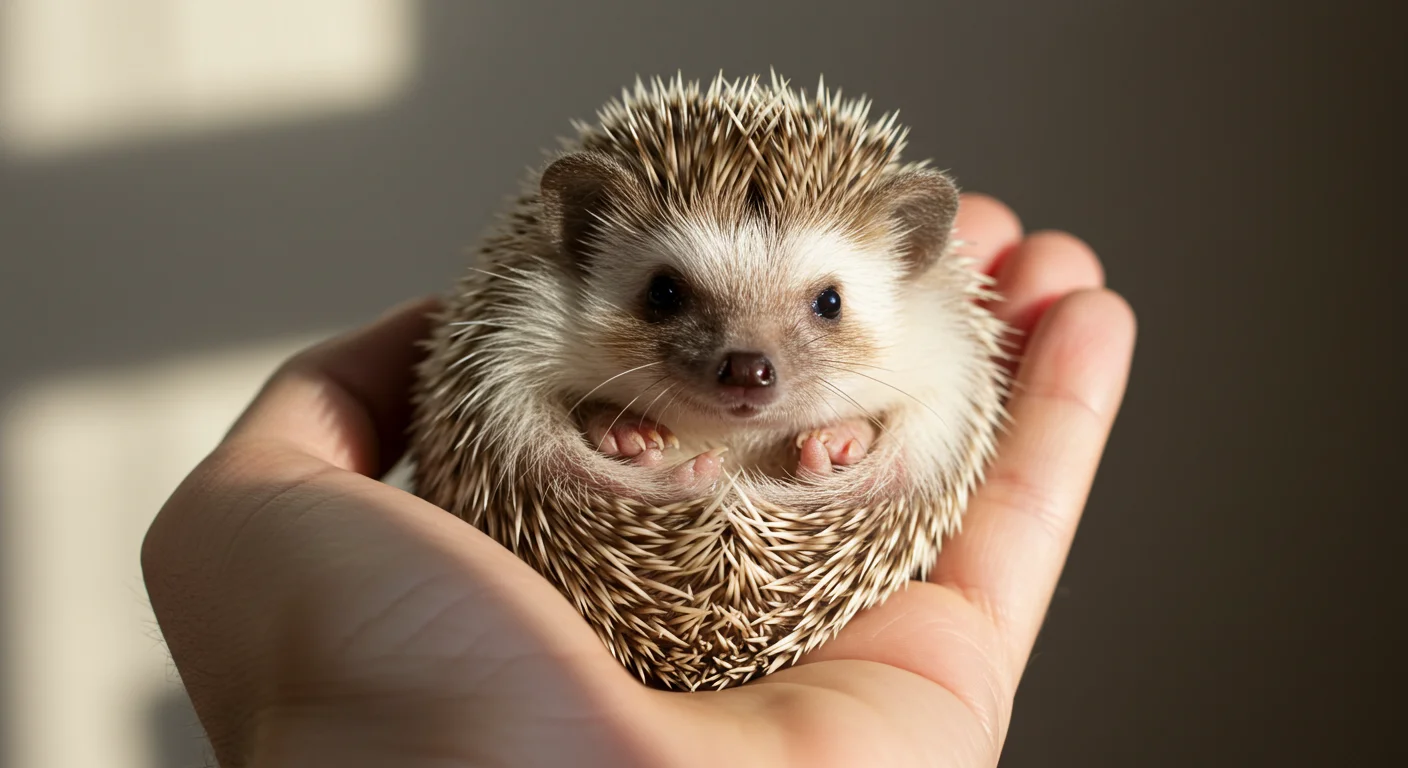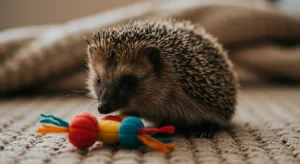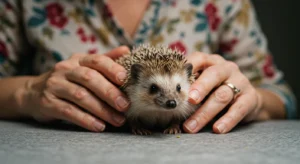Hedgehog Training
Hedgehog Bonding 101: Building Trust with Your Prickly Pal
Hedgehogs aren’t naturally cuddly pets like dogs or cats. As prey animals, their instinct is often to curl up and rely on their quills for defense. However, with patience, consistency, and gentle handling, you can build a trusting relationship with your hedgehog, encouraging them to relax and even enjoy interaction. Bonding takes time, but the reward is a more confident and comfortable companion.
Understanding Hedgehog Nature
Before starting, remember:
- Prey Mentality: Sudden movements, loud noises, and overhead shadows can trigger fear. Approach calmly and from the side or below if possible.
- Sense of Smell: Hedgehogs rely heavily on scent. Your unique smell is key to recognition and trust.
- Quills are Defense, Not Aggression: A balled-up or huffy hedgehog is scared, not mean. Forcing interaction will only reinforce fear.
- Individuality: Every hedgehog has a unique personality. Some will become more outgoing than others. Respect their boundaries.
Applying good hedgehog training tips starts with understanding their core nature.
Patience and Consistency are Crucial
Bonding is a marathon, not a sprint. Don’t get discouraged if progress seems slow.
- Daily Interaction: Aim for at least 15-30 minutes of gentle handling or interaction daily, preferably around the same time (when they are naturally waking up).
- Short, Positive Sessions: Keep initial sessions short and always try to end on a positive note before the hedgehog gets overly stressed or tired.
- Expect Setbacks: Growth, quilling, or environmental changes can sometimes cause temporary regressions in tameness. Be patient and consistent.

Initial Approach & Handling
How you first interact sets the tone.
- Wash Hands (Unscented Soap): Remove potentially alarming scents.
- Speak Softly: Let them hear your voice as you approach the cage.
- Scoop, Don’t Grab: Slide your hands gently under their belly from both sides and lift confidently. Avoid grabbing from above.
- Support Their Body: Ensure their feet are supported by your hands or lap to help them feel secure.
Scent Association
Help your hedgehog learn your scent means safety.
- Worn T-shirt: Place a small piece of an old t-shirt you’ve worn (unwashed) in their sleeping area. Replace it every few days.
- Consistent Handling: The more they associate your scent with gentle handling and security, the faster trust builds. Avoid handling after using strong-smelling lotions or perfumes.
Handling Techniques
Focus on making handling a positive experience.
- Lap Time: Sit quietly with your hedgehog on your lap (place a towel or fleece blanket down first). Let them simply sit, explore your lap, or sleep.
- Bonding Pouch/Snuggle Sack: These provide a dark, secure place for the hedgehog to relax while still being close to you and your scent.
- Gentle Petting: If relaxed, try gently petting their quills *in the direction they lay*. Avoid touching the face or feet initially, as these are sensitive areas.
- Treats (Use Sparingly): Offer a favorite treat (like a mealworm) during or after handling to create positive associations. Don’t overdo it to avoid obesity.

Bonding Activities
Shared quiet time builds familiarity.
- Relax Together: Simply sit with your hedgehog while you watch TV or read. Their presence near you helps them acclimate.
- Supervised Playtime: Sit inside their playpen during supervised out-of-cage time. Let them explore around you.
Interpreting Behavior
Learn to read your hedgehog’s signals:
- Relaxed: Quills flat, exploring calmly, perhaps lying down with legs out (“splooting”).
- Cautious: Quills slightly raised, moving slowly, sniffing intently.
- Scared/Defensive: Hissing, popping, clicking sounds, forehead quills raised, curling into a ball. This means back off slightly and give them space or try a more secure holding method like a snuggle sack.
Learning hedgehog behavior interpretation helps you respond appropriately.
Troubleshooting Reluctance
- Persistent Fear: Go back to basics – short sessions, scent association, minimal direct handling, focus on just being near them calmly.
- Nipping/Biting: Often scent-related (food smells on hands) or fear-based. Ensure hands are clean. Never jerk away suddenly if nipped (can cause injury); gently blow a puff of air at their face. persistent biting may need veterinary investigation to rule out pain.
- Quilling Grumpiness: Hedgehogs are often irritable during quilling (see Quilling article). Be extra patient and gentle during this time.
Seek Veterinary Advice if Needed: Sudden, drastic changes in behavior (e.g., extreme aggression, lethargy) can signal illness or pain. Consult an exotic pet vet if you have concerns about your hedgehog’s health influencing behavior.
Building trust with a hedgehog is a unique and rewarding process. By understanding their perspective and dedicating consistent, gentle effort, you can foster a strong bond with your prickly companion.
Handling and bonding techniques based on established practices within the hedgehog owner community and principles of animal behavior modification.
















